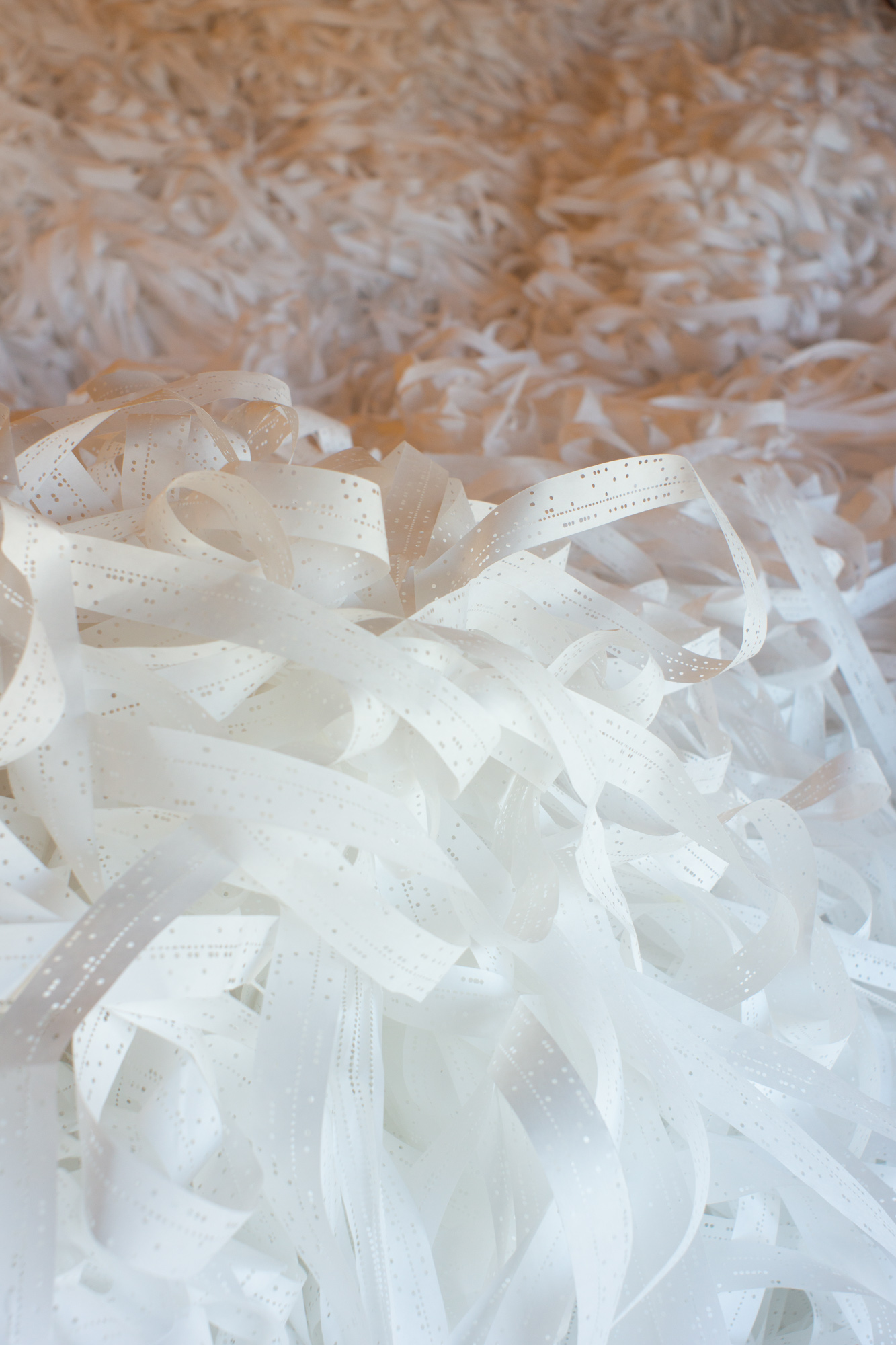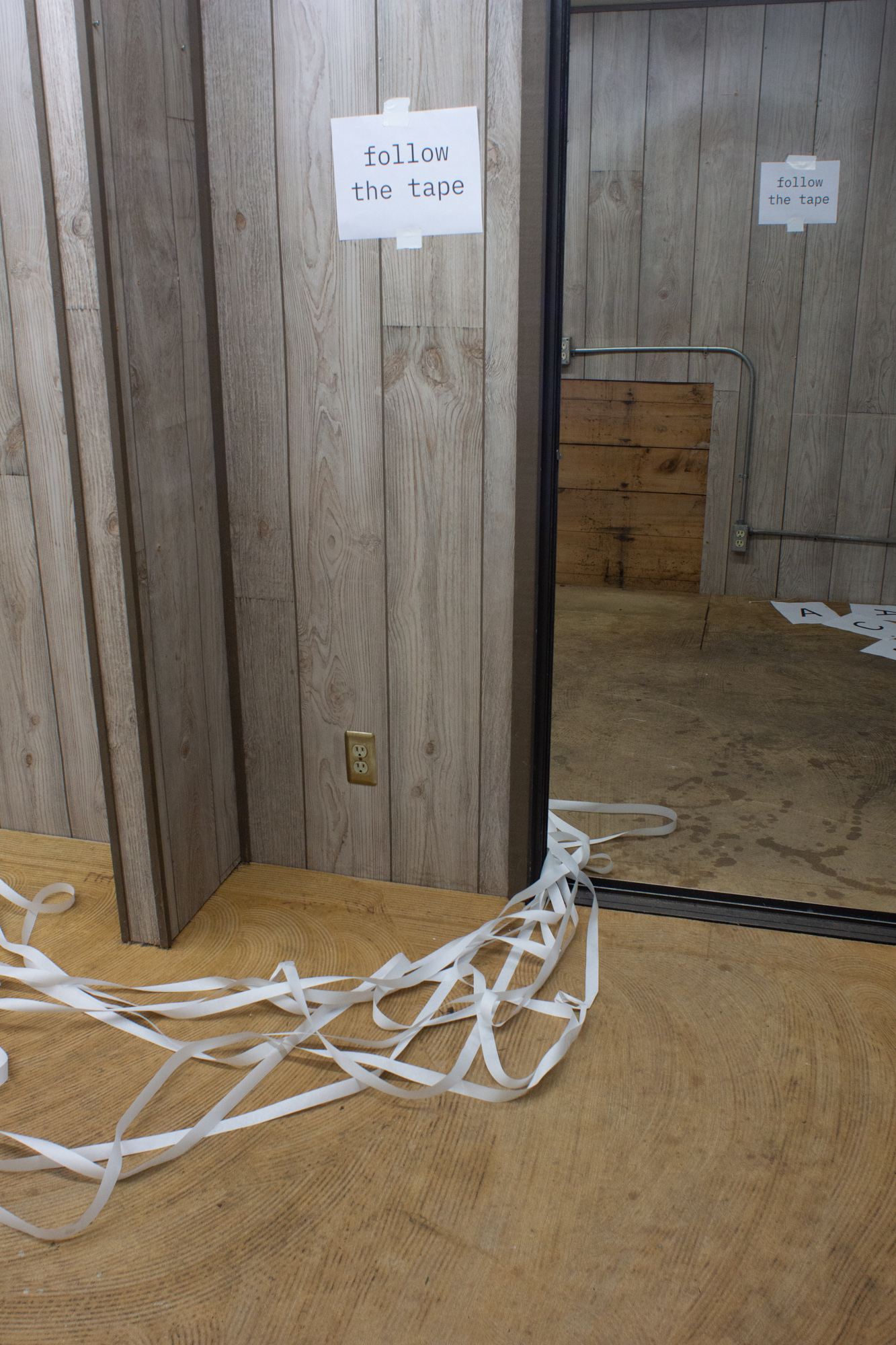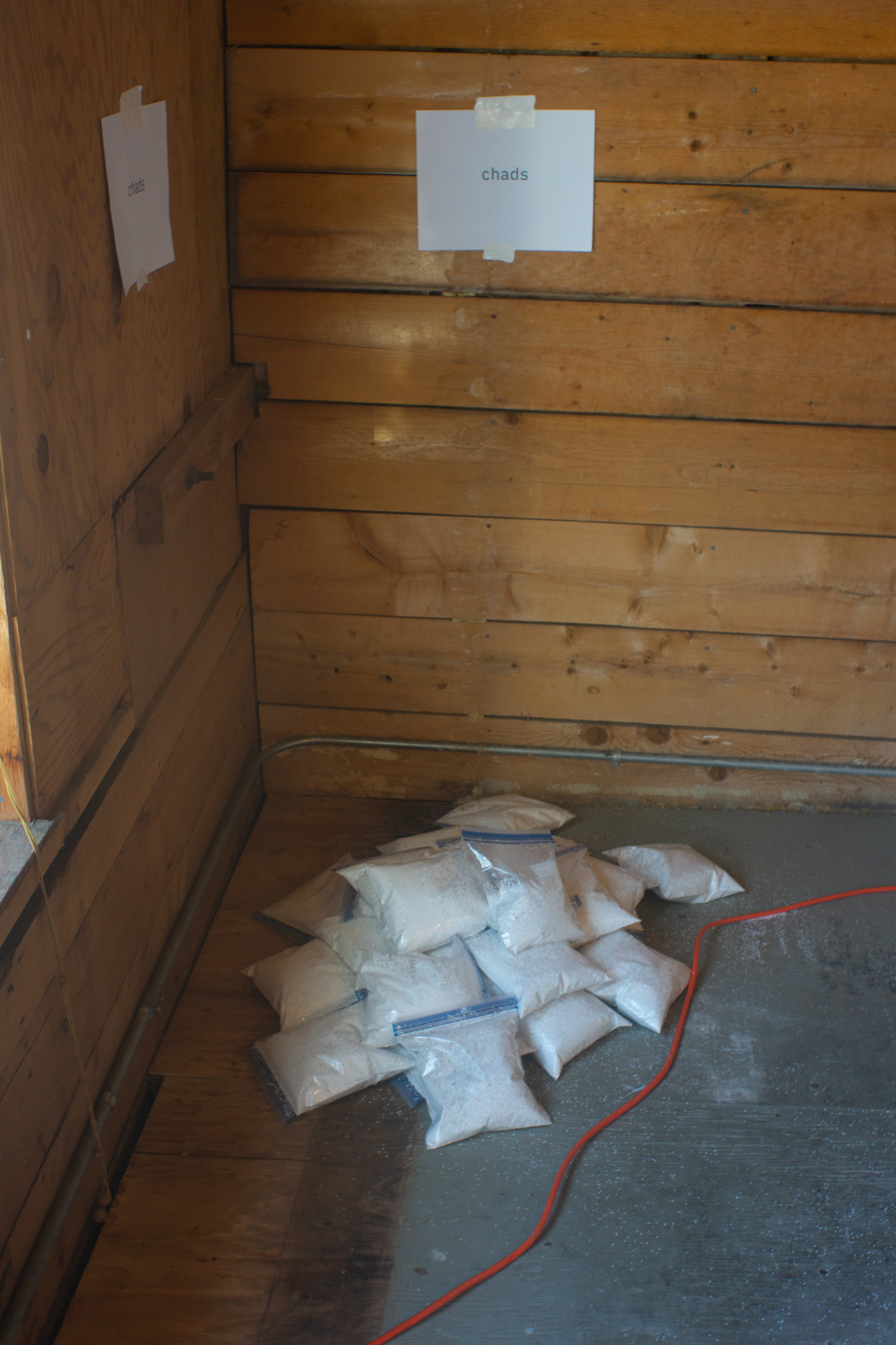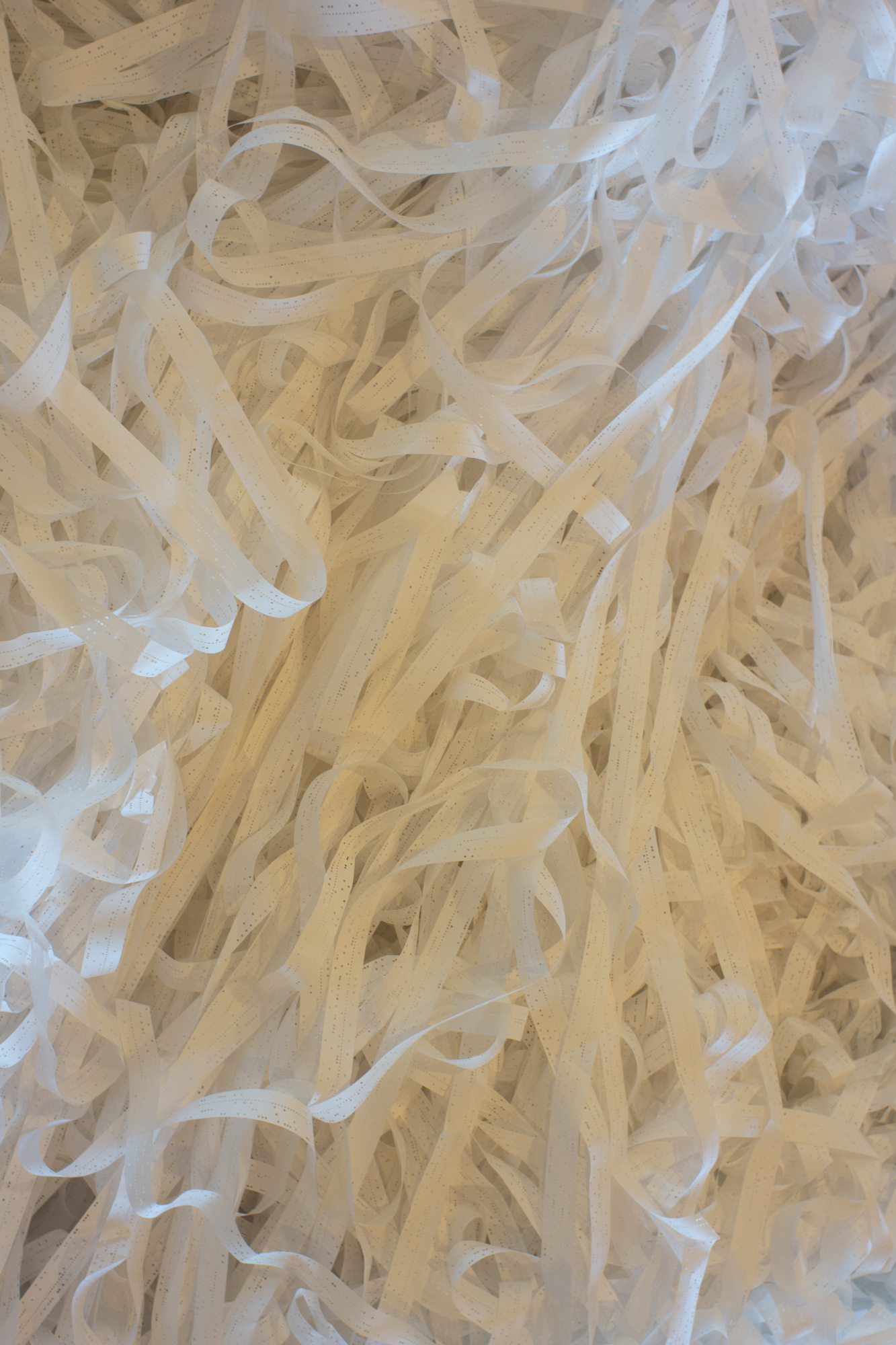DNA Print — Conclusion
The printing’s done; the paper recycled; all that remain are photos and scraps.
In the end, around 1.5% of the human genome was printed. This includes about 10% of chromosome one, half that for chromosome four, plus some progress on the X chromosome. Not bad. And while 1.5% may not sound very impressive, it was a lot of paper.


After a month of printing, I finally opened the doors on a beautiful clear blue sky Sunday afternoon so that people could experience the printed genome and see the punches in action. I even decorated the place to reduced the sketchiness of warehouse setting and guide visitors to the print room on the second story.

Not sketchy at all



These stairs were very safe. I only fell through them once, a only a little bit at that

The numbers have a few too many zeros but oh well
Throughout the afternoon, it was fun showing off the project and even watching a few of the more adventurous visitors go romping about in the tape. The highlight though was when a firetruck and crew of firefighters showed up around 4:30, just as the project was winding down. Apparently, they had been out cruising the neighborhood when they saw my strands of paper flowing from the upper window, and although I did catch some dubious glances at first, once I explained the project and what I was doing, rather than questioning why I had filled a building with what amounts to excellent kindling, they actually found the project pretty awesome.




I only wish that I could have printed in a more public location, so that people could have experienced the project’s progress in person. I just was never able to find a cheap storefront to rent for month in a strip mall. I tried to compensate for this using Twitch, but that just turned out to be a complete pain. 80% the time the stream wouldn’t start properly and then once it did start working, it’d often randomly shut off.



It took many, many hours to print all the paper, but only around six to clean it up. I quickly discovered that the pile of tape mirrored one of John Muir sayings, for to pull on a single strand was to find it hitched to all others. Lacking a machete, I eventually developed a grab and twisting technique that worked rather well and allowed me to tear off tightly bound blobs of tape from the mass. After much compression and packing, the paper that had once filled the room now fit neatly into around 40 trash bags. From there, it only took two car trips to the local recycling center. And with that, the paper genome was disposed of.



Was it worth it though? Was it worth all the time and effort to create this temporary thing that only a handful of people even experienced? Hard to say. All I know is that once a man tried to print the human genome on paper tape, and for one brief moment, 1.5% of that genome was piled up in a warehouse somewhere in Seattle. And I’m glad that happened.
